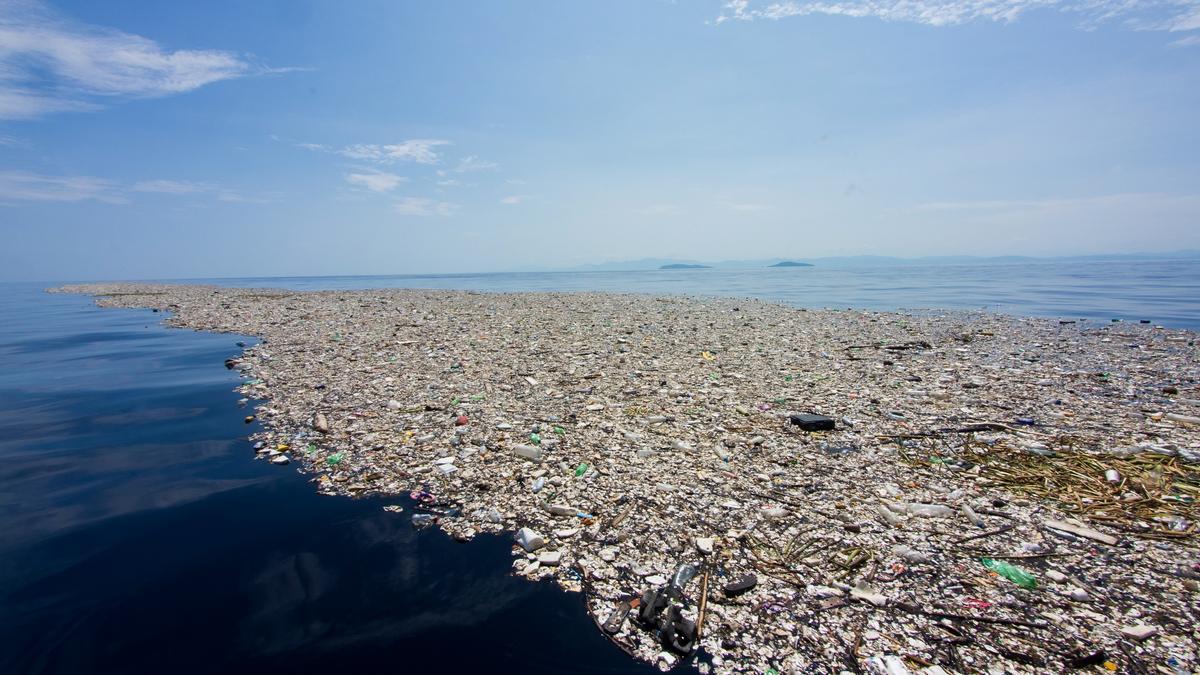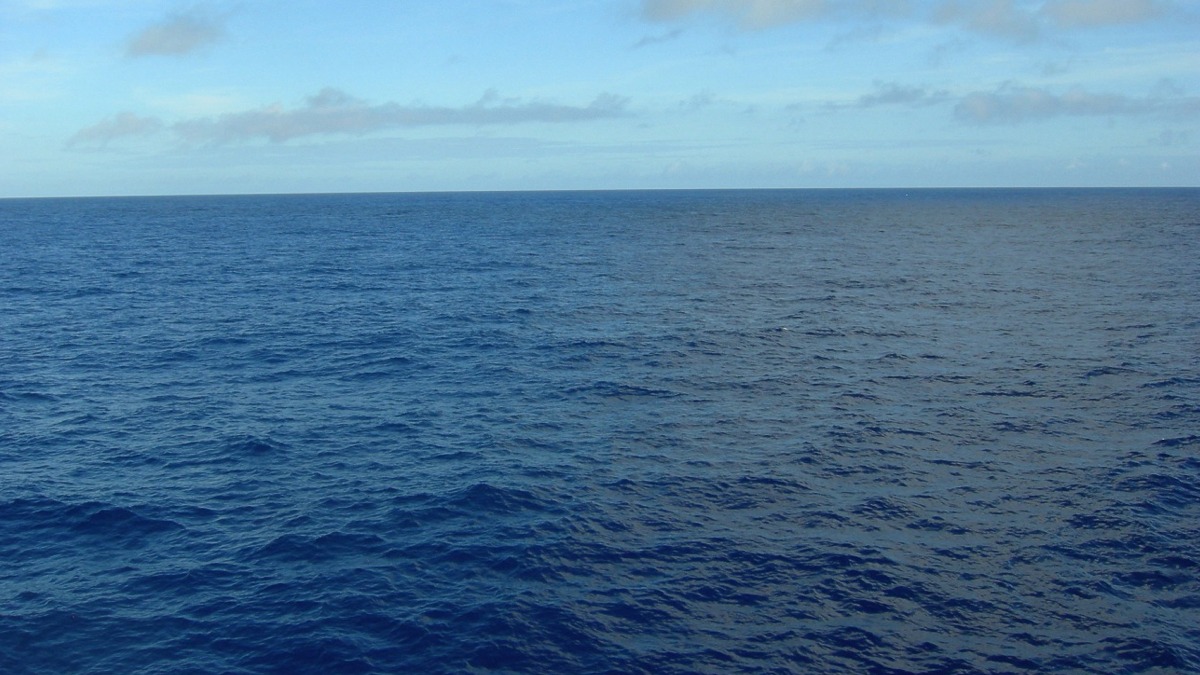Ocean gyres and plastic 'islands'
It’s easy to come across information that refers to the “plastic islands” supposedly accumulating in the world’s oceans. Even in seemingly reputable sources, images like the one below frequently appear. This particular one is accompanied by the caption “300-Mile Swim Through The Great Pacific Garbage Patch Will Collect Data On Plastic Pollution” and it appears to depict a buildup of garbage in one of the seven plastic islands located in the five major gyres, which I will mention below, along with additional accumulations in the Sargasso and Barents Seas. There are many other examples of striking accumulations of plastic presented as images from the ocean gyres. However, those “plastic islands” don’t actually exist. They are a manipulation assembled upon a true reality, which is the accumulation of plastic in the environment, particularly in the oceans. Let’s explore what’s accurate and what causes plastic fragments to float in our seas.

The first data on the presence of plastic in the sea dates back to 1972 when Carpenter and Smith reported the presence of small plastic particles in the Sargasso Sea, collected during surface samplings using plankton nets. The surface density they calculated was 3500 particles per square kilometre, equivalent to one particle per 280 square metres (less than 1 mg per square metre). The majority of the particles were described as pellets (industrial material) ranging from 2.5 to 5 mm in size. This is the type of material often seen in areas near plastic production facilities, such as the beaches of Tarragona, Spain
.This finding (like others) went relatively unnoticed until solid evidences were presented regarding the accumulation of plastic in the ocean gyres. Ocean gyres are currents that follow a circular path due to Earth’s movement. There are five major ocean gyres, one in the Indian Ocean and two in each the Atlantic and Pacific Oceans, rotating clockwise in the Northern Hemisphere and counterclockwise in the Southern Hemisphere. In 2010, Kara Lavender Law and her team published the results of twenty-two years of studies on samples collected in the subtropical North Atlantic gyre. Their findings demonstrated that in the area of greatest accumulation (from 29° to 31° N), the number of floating plastic particles was about 20,000 per square kilometre (this is one per every 50 m2).
Law and her team collected particles larger than 335 microns (a micron being one thousandth of a millimetre) and mostly smaller than 10 mm. The estimated total mass was 1,100 tons, distributed over the approximately two million square kilometres of the gyre. It’s noteworthy that as of 2010, the size of microplastics hadn’t been defined yet, so the particles counted by Law and her team included both microplastics (between one micron and 5 mm) and mesoplastics (from 5 to 25 mm). The term “microplastic” was coined in 2004 by Richard Thompson from the University of Plymouth, as an acronym for “microscopic plastic”, although the upper size limit of 5 mm wasn’t established until 2015. Though the best documented, Law’s discovery wasn’t the only one. A few years earlier, in 2001, Charles Moore and his team published data confirming the presence of plastic in the subtropical North Pacific gyre, with maximum concentrations of 334,271 particles/km2 (one particle every 3 m2).
As seen, the density of floating particles, less than one per square meter of surface area, and their small size, most of them smaller than a millimetre, make their detection difficult even when sailing through them. The image below is an actual photograph taken at the centre of the subtropical North Pacific gyre: The real Great Pacific Garbage Patch. Photo by Miriam Goldstein, 2010 EX1006 cruise. It’s nothing like the first picture, but that doesn’t make it any less of a significant environmental pollution issue.

It’s a pity that reality spoils a terrifying fiction, but distorting facts can only contribute to not taking seriously the threat posed by plastic accumulation in the environment. Plastic pollution is mainly a result of the mismanagement of our waste. (There are other causes like the aforementioned pellet leaks and other hardly avoidable factors like the wear and tear of materials during use, such as in the case of tires or synthetic textiles.) Furthermore, what we see floating in the sea is exactly that, floating plastic: most plastic has a density higher than that of water and doesn’t float, but that doesn’t mean it ceases to exist.
The OECD recently estimated that globally, less than ten percent of plastic is properly recycled. The rest ends up in landfills or is incinerated at best; at worst, it’s scattered in the environment. Most plastics consist of a synthetic polymer with additives that give rise to a material considerably resistant to degradation, making it a persistent contaminant when dispersed in the environment, capable of lasting for years or even centuries. To date, around ten billion tons of synthetic polymers have been produced, and it is estimated (as per the same OECD report) that around 140 million tons of plastic have already accumulated in aquatic ecosystems, three-quarters of which are in rivers and the rest in oceans. Once in the environment, plastic releases the chemical compounds added in its formulation and breaks down into smaller and smaller pieces, the actual risks of which are still undetermined.
In conclusion, “plastic islands” do not exist, but the accumulation of plastic in the natural environment is a very real fact, primarily stemming from the mismanagement of a material that is inherently extremely useful, even irreplaceable in many applications.